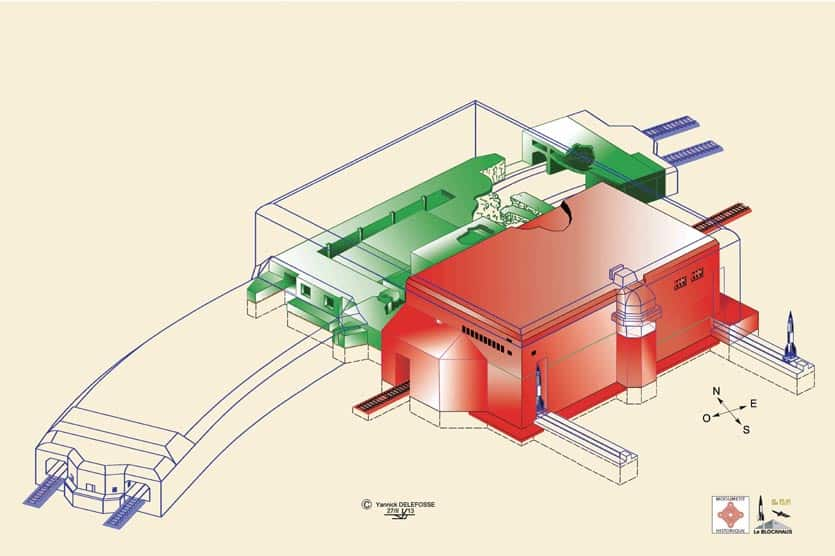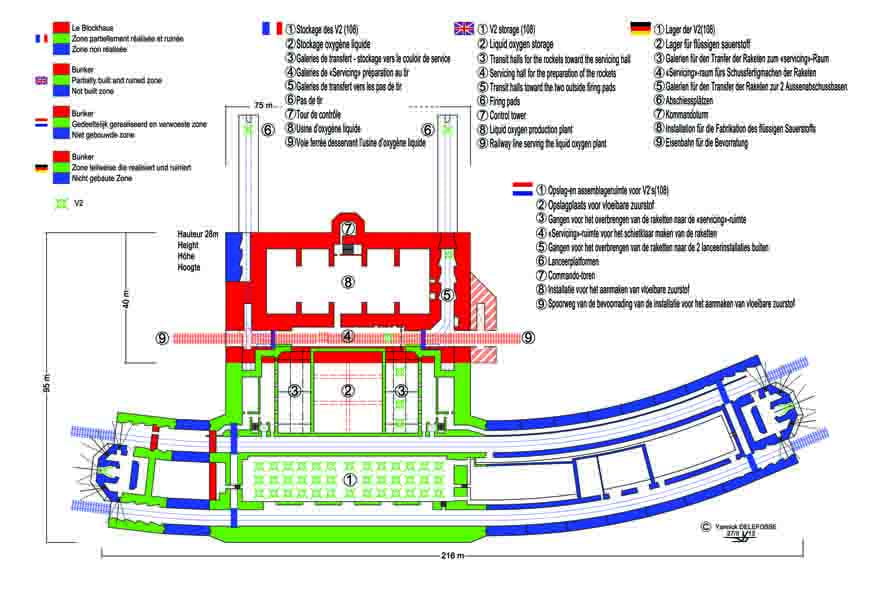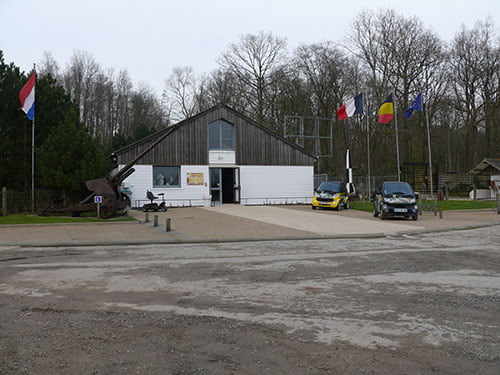Hitler decides to build a V2 rocket launch base
On 22 December 1942, General Dornberger was summoned with Minister Speer to a meeting at the Ministry of Armaments in Berlin, to receive Hitler's order to build a Blockhaus in northern France for the assembly and launching of V2 rockets for the attack on England.
This decision was the conclusion of a large number of reports that had been written by Dornberger, Von Braun and the technical services in Peenemünde on the development of the V2 rocket.
There was a long discussion between those in favour of launching the rockets from heavily protected blockhouses or, on the contrary, from light and mobile firing units, easy to conceal in forests.
The heavily protected Blockhaus was chosen because the adjustment of the rocket before its departure
required many delicate checks, which were easier to carry out in a shelter than in the wild. The Peenemünde technicians therefore built a model.

Plans for the new V2 rocket launch base
A first project, of which a sketch and photos of the model were found, included inside a blockhouse all the elements allowing the assembly of the rockets, to check them and then to raise them by a lift to the roof, where they would have been fired and sent to their targets.
Another very similar project planned, instead of taking the rocket out through the roof, move it vertically inside the blockhouse, take it out through side doors and side doors and launch it from satellite platforms outside the main blockhouse. Outside the main blockhouse.
All that remained was to find a location that would allow such a project to be carried out.
All that remained was to find a place where such a project could be carried out.
The measures planned for the building are as follows :
216 m de long
95 m de large
33 de haut

Where to build the basis for V2 ?
A number of important criteria had to be met :
Relatively easy access by rail and possibly by water was required because of the considerable amount of material that would be needed to build a blockhouse of this size.
After examining a number of locations, the Eperlecques area was chosen.
Indeed, there was a double railway line linking Saint-Omer to Calais, a navigable canal for large barges, a location in a forest on a slope to England, a very favourable electricity supply with high voltage lines passing through the area, and finally a very satisfactory road network throughout the region.
In March 1943, work began...




